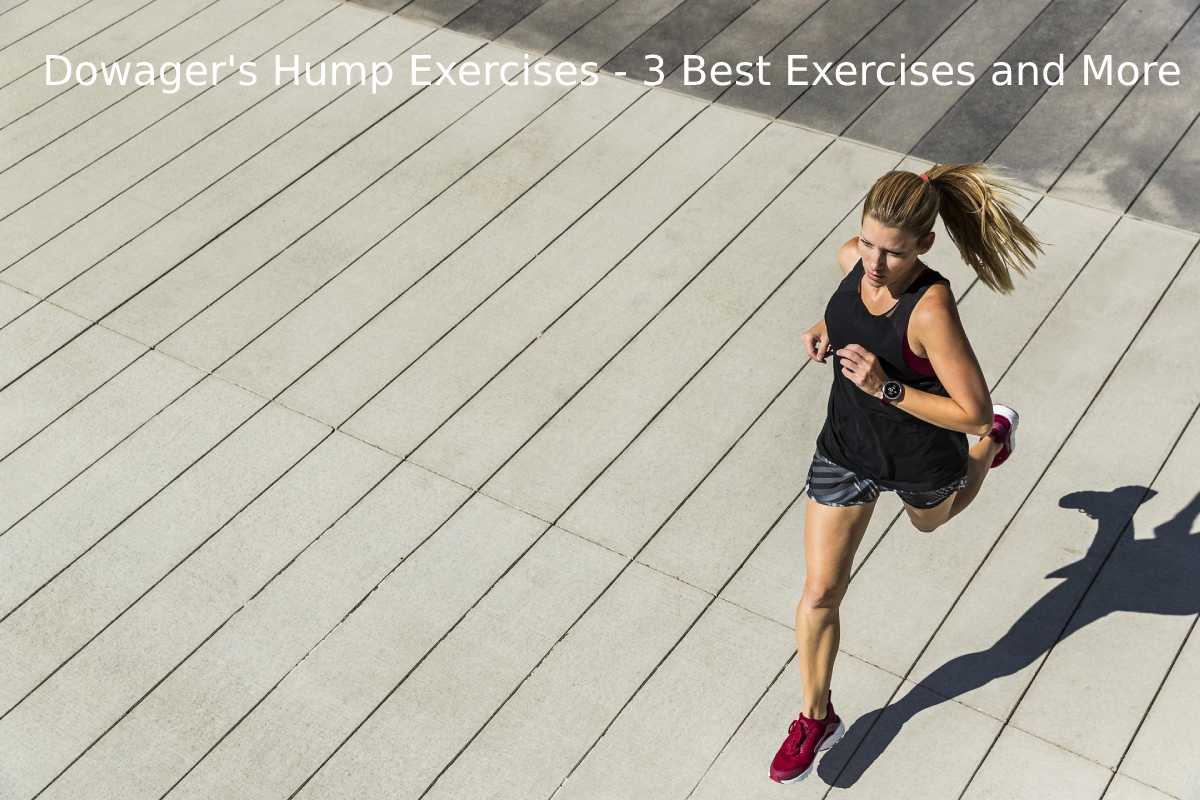Table of Contents
Dowager’s Hump Exercises
Dowager’s Hump Exercises: cause the upper thoracic spine to curve excessively, which is frequently uncomfortable.
If poor posture is ignored, it can have various adverse long-term effects.
Your body adjusts to the movements and situations you find yourself in frequently, and because it happens gradually over time, many people are unaware that their posture is degrading.
A Dowager’s Hump, also known as thoracic kyphosis, is a typical illustration of this in today’s society.
There are two types of Dowager’s humps
Fixed deformity:
- Most prevalent in older women, who have osteoporosis more frequently, and is associated with osteoporotic fractures.
Flexible deformity:
- Dowager’s hump with a flexible malformation does not directly affect the spine. The misalignment is brought on by gravity’s accidental pressure on the upper thoracic spine, although the spinal discs are in good health.
- The thoracic spine, or upper section of the spine, which is known as the dowager hump, is typically rounded or flexed excessively.
- It frequently comes with upper back, neck, and shoulder pain. The Dowager’s hump is frequently observed alongside the forward head position. Some affected individuals even appear to grow shorter as a result.
Dowager’s hump can lead to complications like:
- premature disc degeneration in the cervical spine
- excessive shoulder and neck muscle tightness
- reduced amount of breaths
- Headaches/migraines
- syndrome of shoulder impingement
Poor posture is the foremost underlying cause of Dowager’s hump. This spinal misalignment results from hunching over while sitting and slouching while standing up.
A dowager’s hump can also develop due to repetitive motions and positions, such as when a job necessitates lousy posture or when a plumber must constantly stoop to operate beneath a kitchen sink.
3 Best Exercises to Treat Dowager’s Humps
The deep muscles surrounding your thoracic spine should be flexed as this is the most efficient way to treat Dowager’s humps.
These exercises concentrate on your thoracic and cervical spine, the seven vertebrae in your neck, and the higher spinal (the 12 vertebrae in your upper and middle back).
If you do the exercises every day for seven days, I believe your posture and spinal structure will noticeably improve.
Supine Chin Tuck
The supine chin tuck is a beautiful activation technique that is fantastic for forwarding head posture. It activates the deep cervical flexors to counteract the forward head and lengthens the short cervical extensors.
You must only lift your head high enough to allow a sheet of paper to slide under it if you’re lying on your back and lifting your head just a little bit off the ground by tucking your chin into your chest.
- Hold for five seconds while taking a deep breath.
- After 2 seconds of relaxation, lower your head back to the mat and repeat.
- Do 4-6 repetitions, take a 30-second break, and then repeat for a second set.
Thoracic Spine Extension ERE (End Range Expansion)
The focus of this exercise is the deep multifidus muscles, which are important for maintaining proper posture.
It is a segmental movement, which means that just one section of the spine is moved at once.
It can be difficult at first since you might not feel the muscles we’re looking for, but with practice, you’ll gradually learn to connect your mind to your muscles.
Start in the four-point position on hands and knees.
- You should tilt your pelvis anteriorly and fully lengthen your spine.
- The first action is to posteriorly tilt your pelvis (visualize “tucking your tail between your legs”).
- Next, flex each component of the lumbar spine until you reach the thoracic spine.
- Keep your thoracic spine extended, then flex your cervical spine piece by piece.
- For 1-2 calm breaths or 10-15 seconds, concentrate on keeping the thoracic spine extended while the other areas are in flexion.
- Repeat for 2–5 cycles, slowly resuming where you left off.
Active Hands Behind the Head
The Active Hands Late the Head exercise will work the shoulder muscles and aid in stabilizing the cervical and thoracic spine posture. The main subjects of this article are the scapular retractor, middle trapezius, rhomboids, deltoids, and external rotator muscles.
- Start by taking a tall stance and keeping your spine neutral.
- Don’t move your spine; instead, place your hands behind your head.
- Driving your elbows back, raise your hands off your head in the rear.
(again, resist moving your spine) - For 5 seconds, keep pulling the hands and elbows back while breathing normally.
- Perform a second set after taking a 30-second break by bringing your hands back to the spinal of your head for a 2-count and repeating the exercise for 4-6 reps.
Also Read: Common Disease – Symptoms, Treatment, and More

